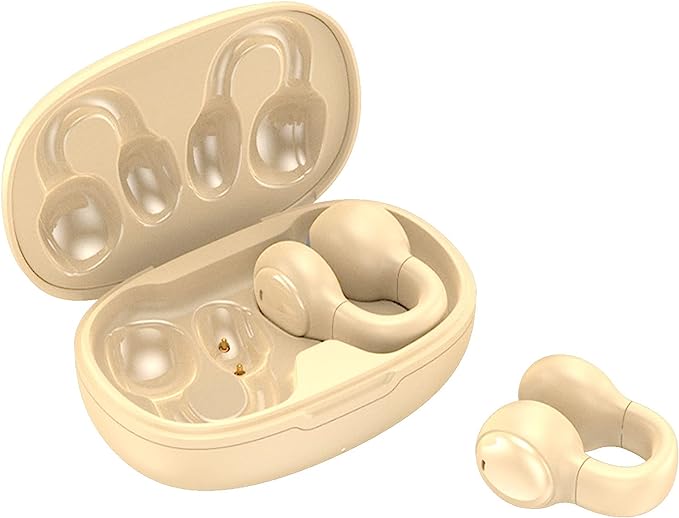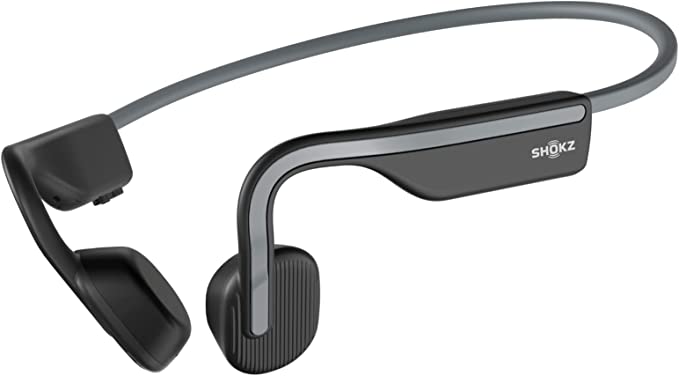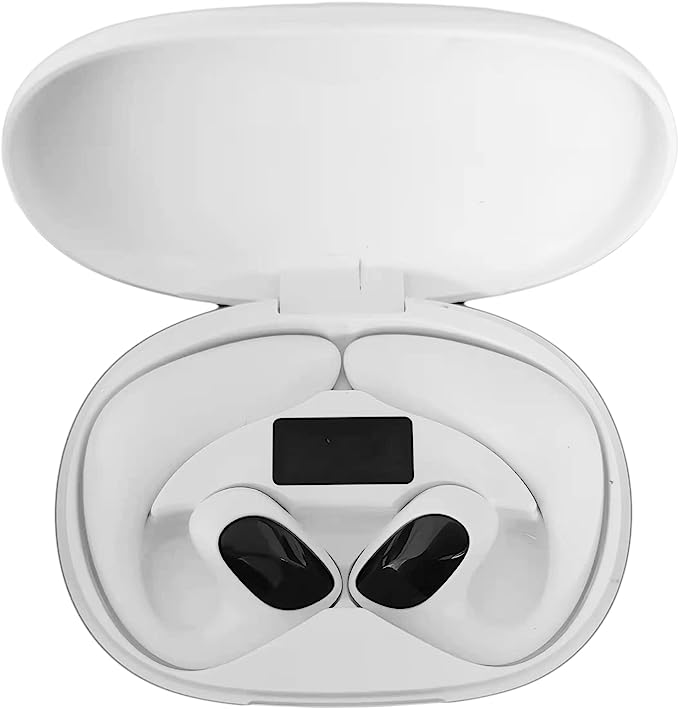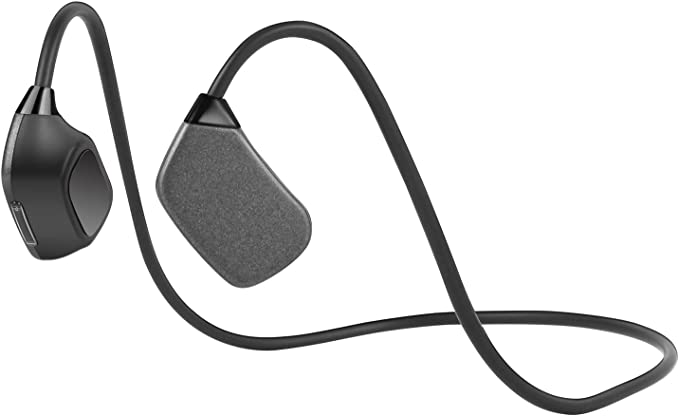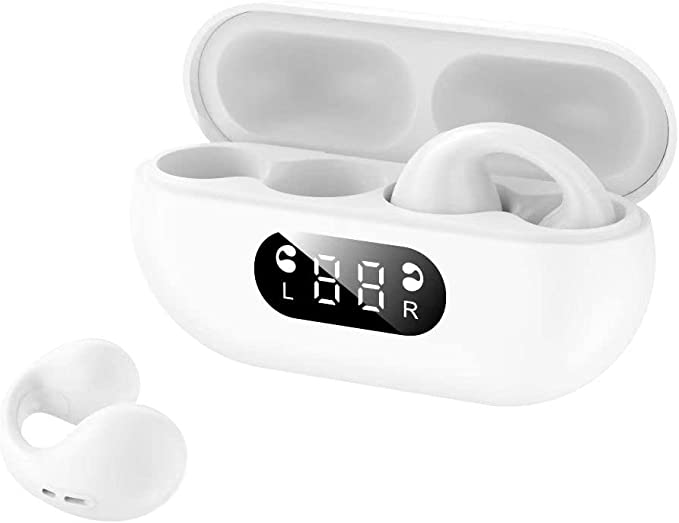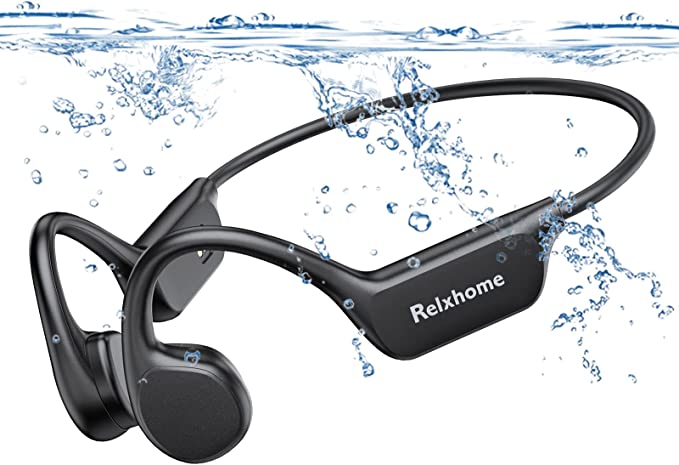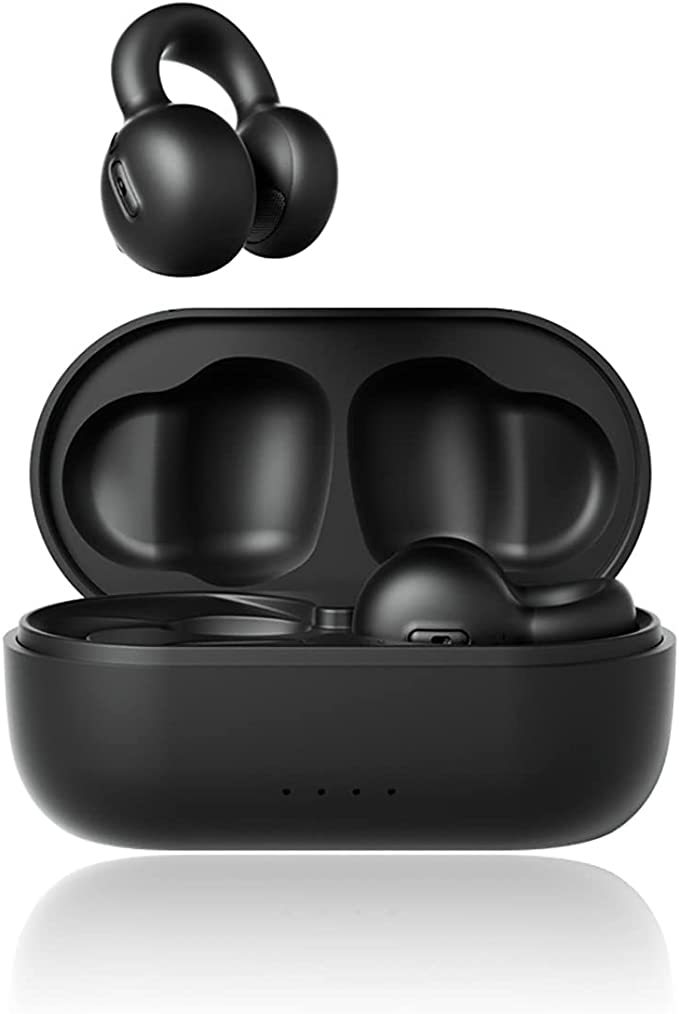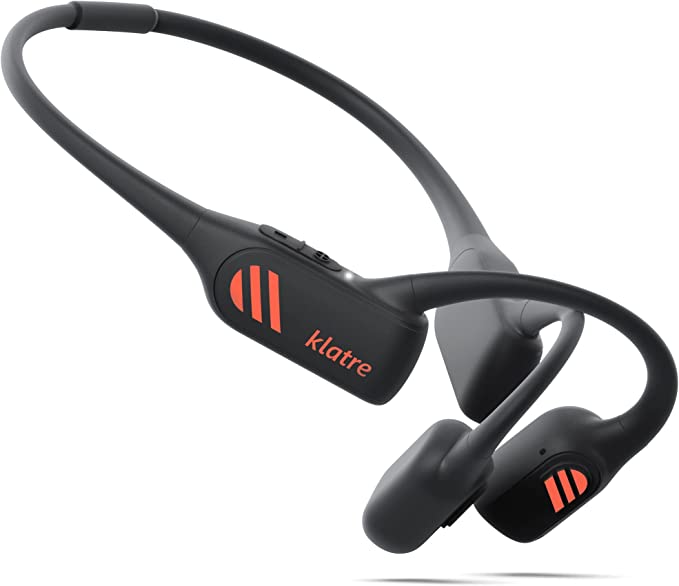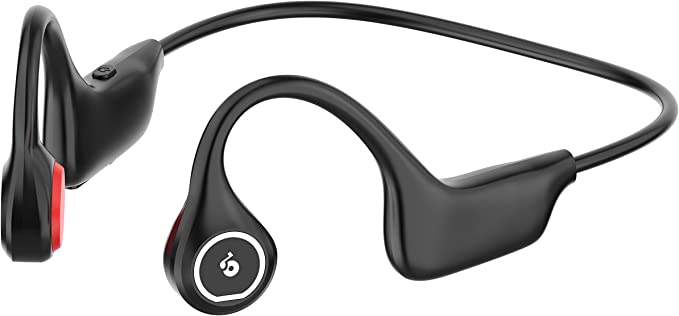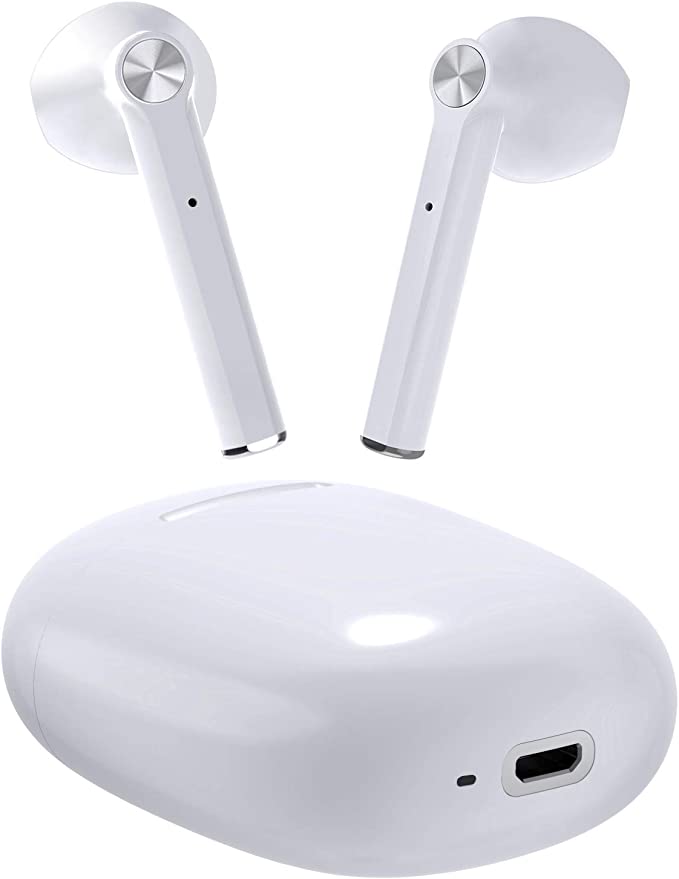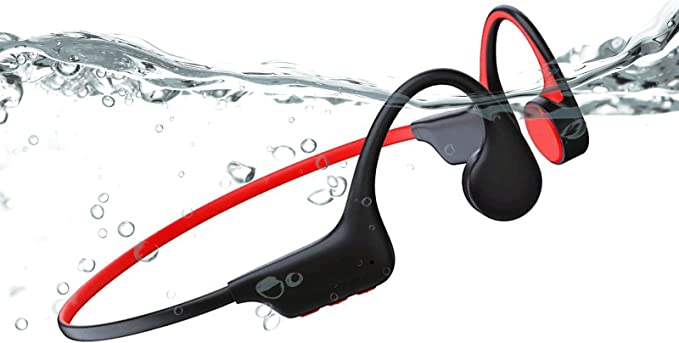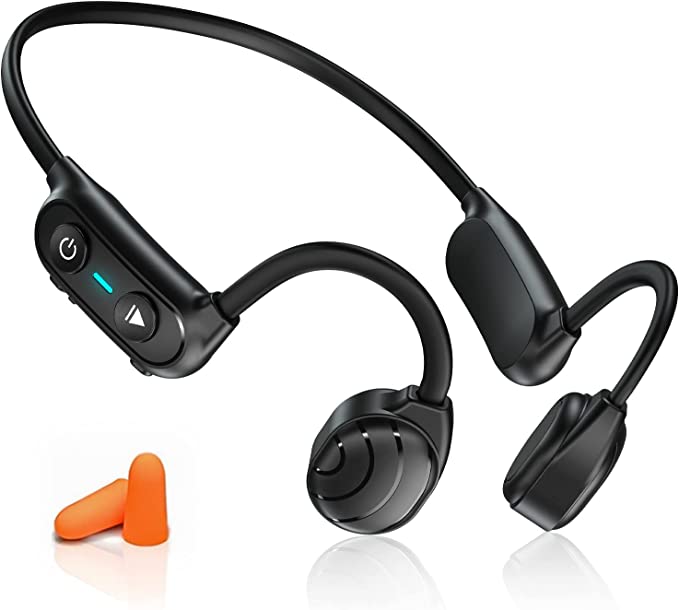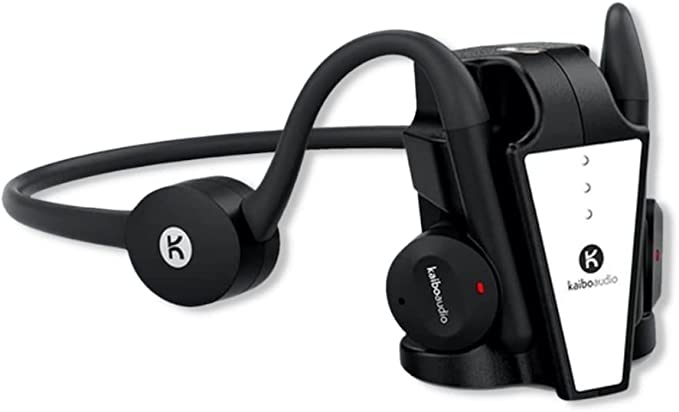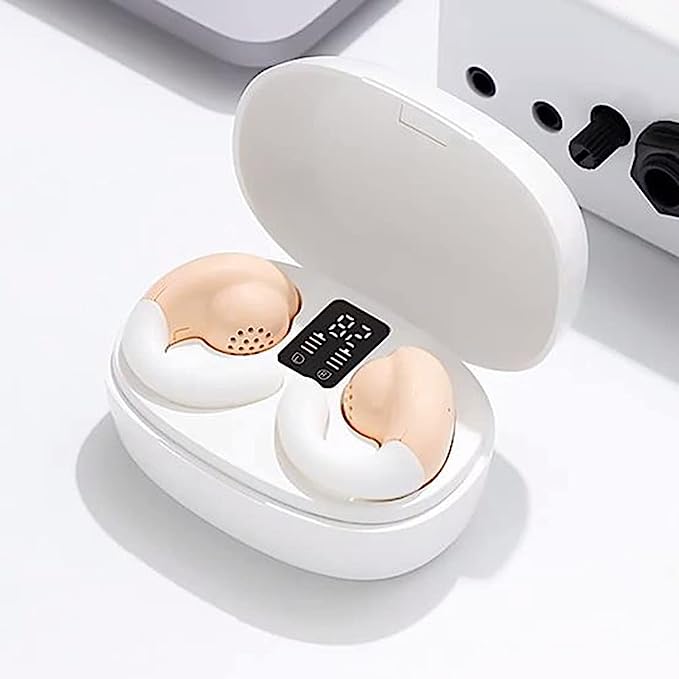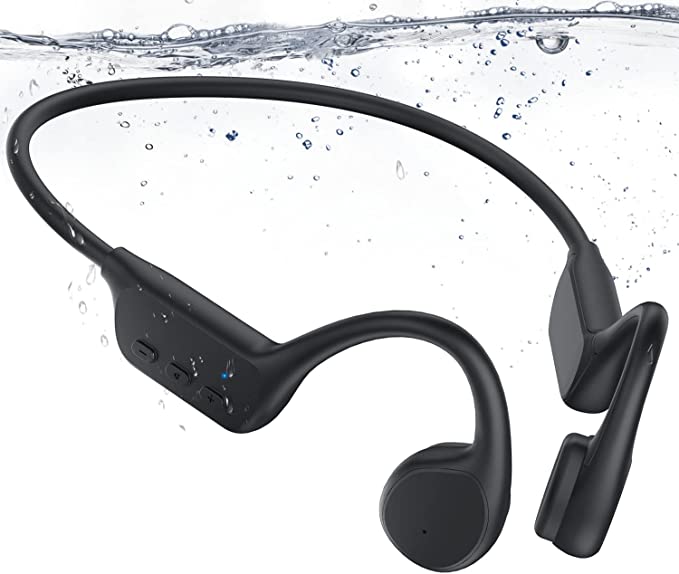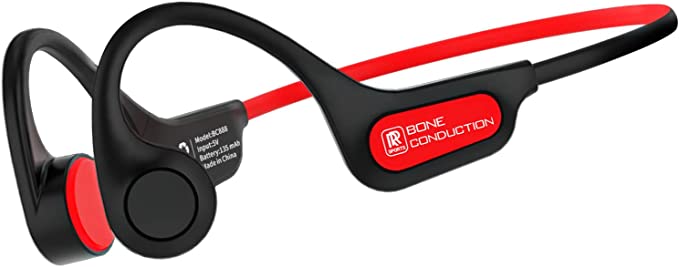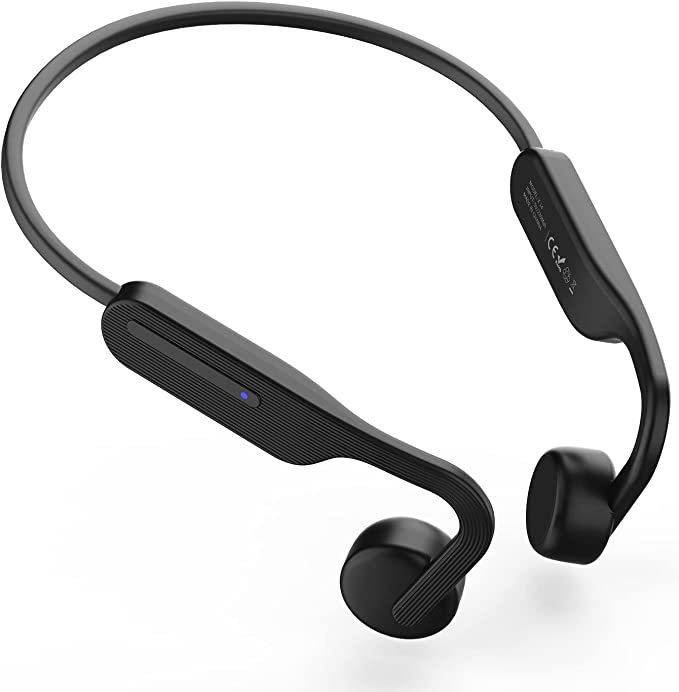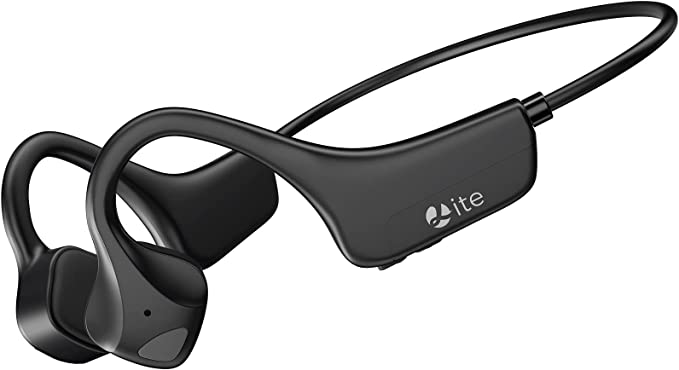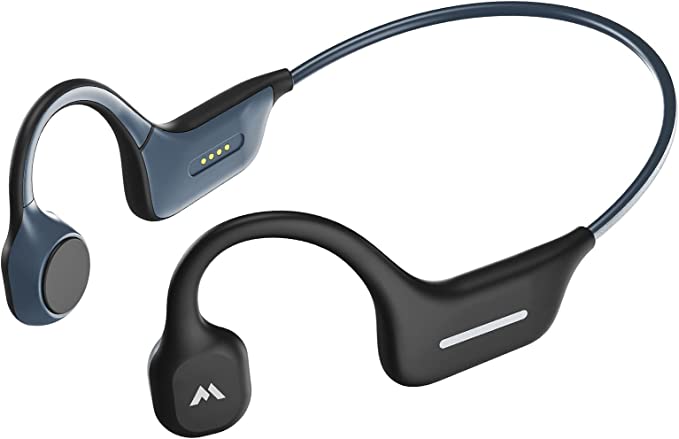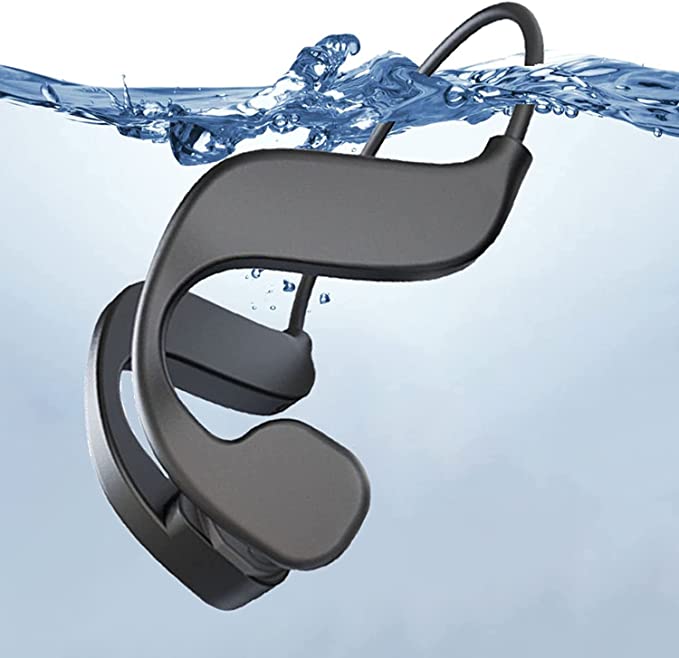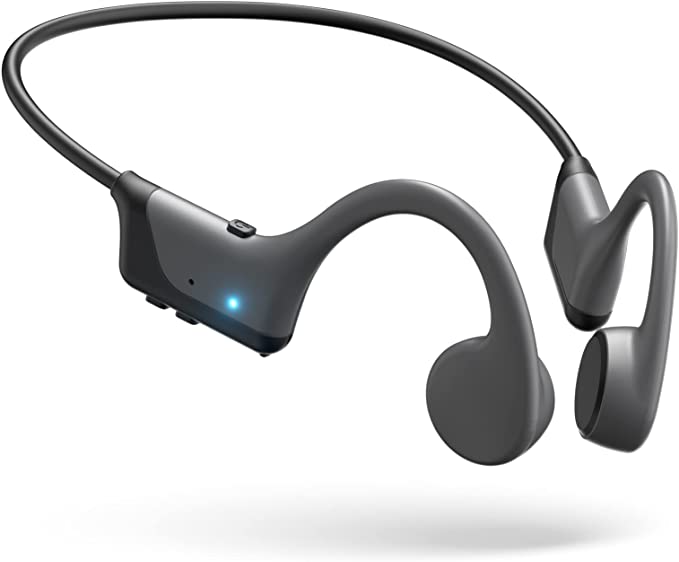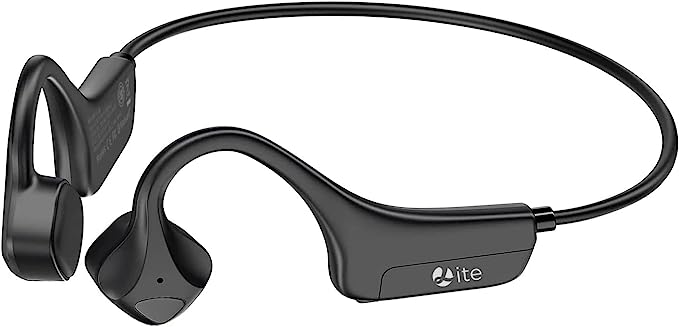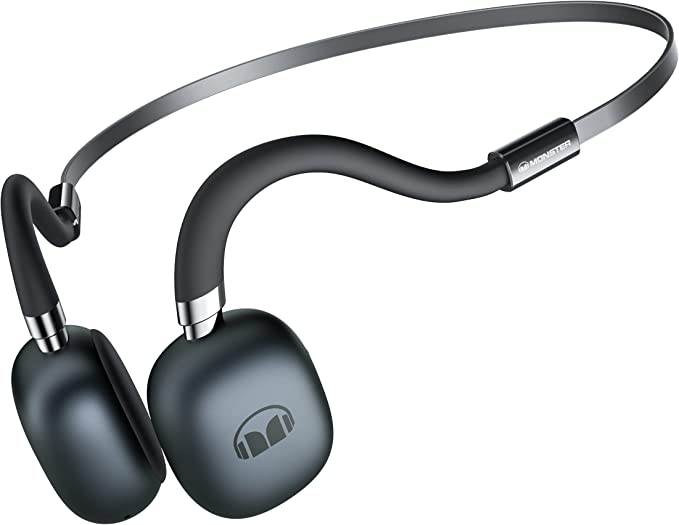OUFUNI X1 Bone Conduction Headphones – A Comfortable and Innovative Audio Experience
Update on June 23, 2025, 5 p.m.
The world around us is a symphony of sounds, a constant stream of information and ambiance that shapes our daily experience. For decades, our primary way of piping personal audio into this world – music, podcasts, calls – has involved either sealing off our ear canals or cupping our ears, creating a private sonic bubble. But what if there was another way? A method of hearing that didn’t require blocking our ears, allowing us to remain fully connected to our surroundings while still enjoying our chosen soundtrack? This isn’t a futuristic fantasy; it’s the established science of bone conduction, and devices like the OUFUNI X1 Bone Conduction Headphones are making this remarkable technology more accessible than ever.

The Auditory Detour: Understanding Bone Conduction
To truly appreciate what the OUFUNI X1 offers, we first need to take a quick dive into how we hear. The most common route, air conduction, involves sound waves traveling through the air, into our ear canal, vibrating the eardrum. These vibrations are then passed along by tiny bones in the middle ear to the cochlea, our inner ear’s sound-processing marvel, which converts them into electrical signals our brain interprets as sound. It’s an intricate and effective system.
However, it’s not the only system. Bone conduction offers an alternative pathway, a sort of auditory shortcut. Instead of traveling through the ear canal and eardrum, sound, in the form of subtle vibrations, is transmitted directly through the bones of our skull – primarily the cheekbones (zygomatic bones, in anatomical terms) – to the very same cochlea. Imagine sound waves taking a VIP express lane, bypassing the usual traffic of the outer and middle ear. This principle has been recognized for centuries. Legend has it that composer Ludwig van Beethoven, as his hearing declined, would bite onto a conducting rod pressed against his piano to “hear” the music through the vibrations in his jawbone. While perhaps apocryphal in its specifics, the underlying science is sound. From those early observations, bone conduction technology has evolved, finding applications in specialized hearing aids, military communication systems, and now, increasingly, in consumer audio.
The OUFUNI X1 headphones exemplify this modern application. They don’t sit in or over your ears. Instead, their transducers rest gently on your cheekbones, just in front of your ears. When audio plays, these transducers generate those minute vibrations. You can even perform a simple demonstration, as OUFUNI suggests: wear the headphones correctly, then plug your ears with your fingers. If you can still clearly hear the music, that’s bone conduction at work – your cochlea is receiving the sound signals directly through your bones.

OUFUNI X1: Where Thoughtful Design Meets Auditory Science
Understanding the “how” of bone conduction naturally leads to the “why” – why choose this technology, and how does a product like the OUFUNI X1 leverage it for a better user experience?
The Liberation of Open-Ear Listening:
The most immediate and perhaps most impactful benefit is the open-ear design. Because nothing obstructs your ear canal, you remain fully aware of your environment. This is more than a convenience; it’s a significant safety feature. For runners navigating city streets, cyclists sharing roads with traffic, or even pedestrians wanting to hear an approaching vehicle or a bicycle bell, this constant situational awareness is invaluable. As one OUFUNI X1 user, Jenni Ford, shared in her review, “They do a great job and I can still hear what’s going on if I am walking by a street or someone is trying to talk to me when I am gardening.” This ability to simultaneously enjoy audio and perceive ambient sounds is a cornerstone of the bone conduction promise.
This open-ear freedom is also a boon for comfort. The OUFUNI X1 headphones are remarkably light, weighing in at just around 29 grams (or 1.02 ounces). This featherlight presence is achieved in part by their wrap-around titanium frame. Titanium is a fascinating material – strong yet flexible, and incredibly lightweight. This allows the frame to provide a secure, stable fit that stays in place even during “intense training,” as the product description notes, without exerting uncomfortable pressure. For individuals who wear glasses, the behind-the-head band and on-cheekbone placement often mean a more comfortable coexistence than with many over-ear or even some in-ear designs. OUFUNI also provides a practical fitting guideline: the headphones are best suited for those where “the distance between the two ears is 10inch or less,” a thoughtful detail for managing expectations and ensuring a good fit for most users, while cautioning those with larger head circumferences. The result is a design that allows for “all-day listening without ear fatigue,” a stark contrast to the pressure or irritation some experience with traditional headphones.
Clarity Amidst the Clatter: The ENC Factor:
While open-ear listening keeps you connected to your surroundings, there are times when you need to isolate specific sounds – particularly your voice during a phone call. The OUFUNI X1 incorporates an integrated ENC (Environmental Noise Cancellation) chip. This isn’t about creating a silent bubble for your music (the open-ear design inherently prevents that). Instead, ENC technology in this context focuses on your microphone’s input. It intelligently works to distinguish your voice from ambient background noises, filtering out some of the chatter, traffic hum, or office din, aiming for “clear call sound” for the person on the other end of the line. It’s a subtle but crucial piece of engineering that enhances the X1’s practicality as an everyday communication tool.
Endurance for Your Day, and a Quick Boost When Needed:
An active lifestyle demands audio gear that can keep up. The OUFUNI X1 is designed to provide over 6 continuous hours of music, calls, or podcasts on a single full charge (which takes about 1.5 hours). For those moments when you’re short on time but need a quick audio fix, the 5-minute magnetic fast charging feature is a standout, offering up to approximately an hour of battery life. This magnetic charging system also adds a touch of convenience, making a secure connection for charging simpler than fumbling with small ports. And to withstand the rigors of an active life, these headphones are built to be sweatproof and waterproof. This means they can handle the perspiration from an intense workout or an unexpected downpour during your run. OUFUNI is clear, however, that this resilience doesn’t extend to full submersion, stating they are “Not suitable for swimming.”

The Unique Sonic Landscape of Bone Conduction
It’s important to understand that listening via bone conduction offers a slightly different sonic experience compared to traditional air-conduction headphones. The OUFUNI X1 aims for “balanced audio, powerful volume and excellent sound,” and for many types of content, it delivers a clear and satisfying experience. However, because the sound bypasses the resonant cavities of the ear canal and the eardrum’s typical response, the deep, thumping bass frequencies often emphasized by in-ear monitors might feel less pronounced. This isn’t a flaw, but rather an inherent characteristic of how sound is perceived through bone.
Another aspect often discussed is “sound leakage” – the possibility of people nearby hearing a faint whisper of your audio. OUFUNI addresses this with transparency, noting it as a “commonality of bone conduction headphones.” This occurs because the transducers themselves vibrate, and if the volume is high, some of these vibrations can translate into faint sound waves in the air around the device, especially if it’s not being worn snugly against the cheekbones. The product description explains this phenomenon by noting “the inside of the headphones is also a closed cavity.” For optimal listening enjoyment and to minimize leakage, OUFUNI recommends adjusting the volume to 70-80% in most environments, though you can increase it when necessary.

Beyond the Obvious: The Subtle Comforts and Connections
The benefits of the OUFUNI X1 extend beyond just safety and a novel listening method. For individuals who find traditional earbuds uncomfortable, causing pressure points, itching, or even contributing to earwax buildup or outer ear infections, the open-ear design offers significant relief. Lori Moltz, another user, highlighted this, stating, “I purchased these mainly because I’m trying to stop using earbuds so my ears can breathe. My over-the-ear headphones worked fine but after a whole day of wearing those my head would hurt from the pressure…these work great for that purpose!” This sentiment underscores a key appeal: healthy, comfortable listening.
Moreover, the ability to remain audibly connected to your immediate environment fosters a different kind of engagement with the world. You’re not cut off. You can enjoy your podcast while still hearing your kids playing in the next room, listen to an audiobook while working in the garden and still hear a neighbor’s greeting, or follow GPS directions on a bike ride while remaining fully alert to the sounds of nature or the city around you. It’s about integrating your personal audio into the fabric of your life, rather than using it to escape from it.
A New Way to Hear: Embracing the Potential
The OUFUNI X1 Bone Conduction Headphones stand as a testament to how established scientific principles can be reimagined with modern materials and electronics to create genuinely useful and innovative consumer products. They offer a compelling package for anyone who values situational awareness, long-term wearing comfort, and a listening experience that keeps them connected to both their digital content and their physical world.
While bone conduction might not replace every type of headphone for every situation – particularly for audiophiles seeking the utmost fidelity and isolation – it presents a fantastic alternative and, for many, a superior solution for active lifestyles, outdoor pursuits, and daily use where awareness and comfort are paramount. As we continue to explore new ways to interact with technology and the sounds that enrich our lives, bone conduction, as exemplified by the OUFUNI X1, undoubtedly offers a fascinating and highly practical path forward, inviting us all to quite literally hear the world a little differently.
